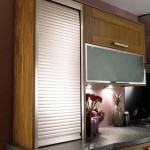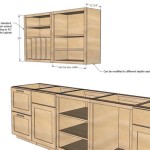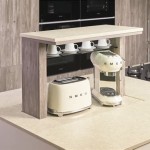Best Roller to Paint Kitchen Cabinets: Achieving a Flawless Finish
Painting kitchen cabinets is a cost-effective way to revitalize a kitchen's aesthetic. However, achieving a smooth, professional-looking finish requires careful planning and the right tools. Among these tools, selecting the appropriate roller is crucial. The texture, material, and size of the roller significantly influence the final appearance of the painted cabinets. This article explores the key considerations for choosing the best roller to paint kitchen cabinets, focusing on the factors that contribute to a flawless finish.
Understanding the Importance of Roller Material
The material of the roller cover is a primary factor determining paint application and the resultant surface texture. Different materials are suited for different types of paint and surfaces. Choosing the wrong material can lead to undesirable results, such as excessive stippling, uneven coverage, or even damage to the cabinet surface.
Microfiber rollers are highly regarded for their ability to produce an extremely smooth finish. These rollers are made from synthetic fibers that are very fine and dense, allowing them to hold a significant amount of paint while minimizing the formation of air bubbles. This results in a virtually flawless surface, making them ideal for painting kitchen cabinets, especially those with a smooth or glossy finish.
Foam rollers are another option for achieving a smooth finish, particularly when using oil-based paints or varnishes. These rollers have a closed-cell structure that prevents paint from penetrating too deeply, ensuring even distribution and minimizing the appearance of brushstrokes or roller marks. However, foam rollers may not be as durable as microfiber rollers and may require more frequent replacement, especially when working with rougher surfaces.
Mohair rollers, made from the hair of Angora goats, are known for their ability to create a very smooth and durable finish. While traditionally used with oil-based paints, newer synthetic mohair blends are also suitable for use with water-based paints. Mohair rollers are particularly effective for applying thin coats of paint, which is essential for preventing drips and ensuring a consistent finish on cabinet doors and frames.
Natural fiber rollers, such as those made from sheepskin or lamb's wool, are less commonly used for painting kitchen cabinets due to their tendency to leave behind lint or fuzz. While these rollers can hold a large amount of paint, they are better suited for painting larger, rougher surfaces where a perfectly smooth finish is not critical.
Selecting the Right Roller Nap Length
The nap length, or the thickness of the roller cover's fibers, influences the amount of paint it holds and the texture it imparts to the surface. A shorter nap is generally preferred for painting smooth surfaces like kitchen cabinets, while a longer nap is better suited for textured surfaces.
For kitchen cabinets, a roller with a nap length of ¼ inch to ⅜ inch is typically recommended. This short nap length ensures that the roller applies a thin, even coat of paint without creating excessive stippling. Using a longer nap roller on a smooth surface can result in an uneven finish with noticeable roller marks, which is undesirable for kitchen cabinets.
The specific nap length may also depend on the type of paint being used. For example, thinner paints may require a slightly shorter nap length to prevent dripping, while thicker paints may benefit from a slightly longer nap length to ensure adequate coverage. Experimentation on a small, inconspicuous area of the cabinet is recommended to determine the optimal nap length for the chosen paint.
It is important to note that the nap length can also affect the overall efficiency of the painting process. A shorter nap roller may require more frequent reloading with paint, while a longer nap roller can hold more paint but may be more difficult to control, potentially leading to drips or uneven application.
Choosing the Appropriate Roller Size and Frame
The size of the roller and the type of frame used can also impact the ease and efficiency of painting kitchen cabinets. A smaller roller is generally easier to maneuver in tight spaces and around intricate details, while a larger roller can cover more surface area in less time.
For painting kitchen cabinets, a 4-inch or 6-inch roller is often the most practical choice. These smaller rollers are lightweight and easy to control, allowing for precise application of paint in corners, along edges, and around hardware. They are also ideal for painting cabinet doors and drawer fronts, which typically have smaller surface areas than the cabinet frames.
Larger rollers, such as 9-inch rollers, can be used for painting the larger, flatter surfaces of the cabinet frames. However, they may be more difficult to maneuver in tight spaces and may require more effort to control, especially when painting vertically. Using a larger roller can be more efficient for painting larger areas but requires greater precision to avoid drips and uneven coverage.
The roller frame should be durable and comfortable to hold. A metal frame with a plastic or rubber grip is generally preferred, as it provides a secure and ergonomic grip, reducing fatigue during extended painting sessions. The frame should also be compatible with the chosen roller cover, ensuring a snug fit and preventing slippage during use.
Some roller frames also feature extendable handles, which can be useful for painting hard-to-reach areas, such as the tops of tall cabinets. However, extendable handles can also make the roller more difficult to control, especially when painting delicate surfaces like kitchen cabinets. It's essential to practice using the extended handle before painting the cabinets to ensure smooth and even application.
Preparing the Cabinets and Rollers for Painting
Proper preparation is crucial for achieving a professional-looking finish when painting kitchen cabinets. This includes thoroughly cleaning the cabinets, sanding them to create a smooth surface, and priming them to ensure proper paint adhesion. Prior to painting, it is also important to prepare the rollers.
New roller covers often have loose fibers or lint that can transfer to the painted surface, creating an uneven or textured finish. To remove these loose fibers, wrap the roller cover with painter's tape and peel it off. Repeat this process several times until the tape comes away clean. Alternatively, you can wash the roller cover with soap and water, then allow it to dry completely before use.
Priming the roller cover before painting can also improve its performance. This involves saturating the roller with a thin coat of primer and rolling it out on a piece of cardboard or scrap wood to remove any excess. Priming the roller helps to create a smoother, more consistent paint application and prevents the roller from absorbing too much paint during the initial coat.
Cleaning the rollers immediately after use is essential for extending their lifespan. For water-based paints, rinse the roller cover thoroughly with water until all traces of paint are removed. For oil-based paints, use mineral spirits or paint thinner to clean the roller, following the manufacturer's instructions. After cleaning, allow the roller cover to dry completely before storing it in a clean, dry place.
Considering Paint Type and Finish
The type of paint and the desired finish are also important considerations when choosing a roller for painting kitchen cabinets. Different paints and finishes require different rollers to achieve the best results.
For water-based paints, such as latex or acrylic paints, microfiber or foam rollers are generally recommended. These rollers are compatible with water-based paints and provide a smooth, even finish. For oil-based paints, mohair or foam rollers are often preferred. These rollers are more resistant to the solvents in oil-based paints and prevent the paint from drying too quickly.
The desired finish also plays a role in determining the best roller to use. For a glossy finish, a microfiber or foam roller is ideal, as it minimizes the appearance of brushstrokes or roller marks. For a matte finish, a mohair or short-nap microfiber roller can provide a smooth, even surface without excessive sheen.
When using specialty paints, such as chalk paint or milk paint, it's important to consult the manufacturer's recommendations for the best roller to use. These paints may require specific types of rollers to achieve the desired texture and finish.
Ultimately, selecting the best roller to paint kitchen cabinets depends on a combination of factors, including the material, nap length, size, paint type, and desired finish. By considering these factors carefully, individuals can choose the right roller to achieve a flawless, professional-looking finish that enhances the beauty and value of their kitchen.

The Best Paint Roller For A Smooth Finish On Cabinets And Furniture

Best Type Of Roller For Painting Cabinets Quick Guide Prudent Reviews

The Best Roller For Painting Cabinets

Best Rollers For Painting Cabinets Top 8 What To Look

Should I Use A Brush Or Roller To Paint Cabinets Upvc Sprayers

How To Choose The Right Paint Roller Monarch Painting

How To Paint Cabinets Like A Pro Jenna Sue Design

How To Paint Kitchen Cabinets In 7 Simple Steps

Paint Your Cabinets With The Right Brush Diy Painting Cabinet Doors N More

How To Paint Oak Cabinets White Best Diy Guide 2024
Related Posts








